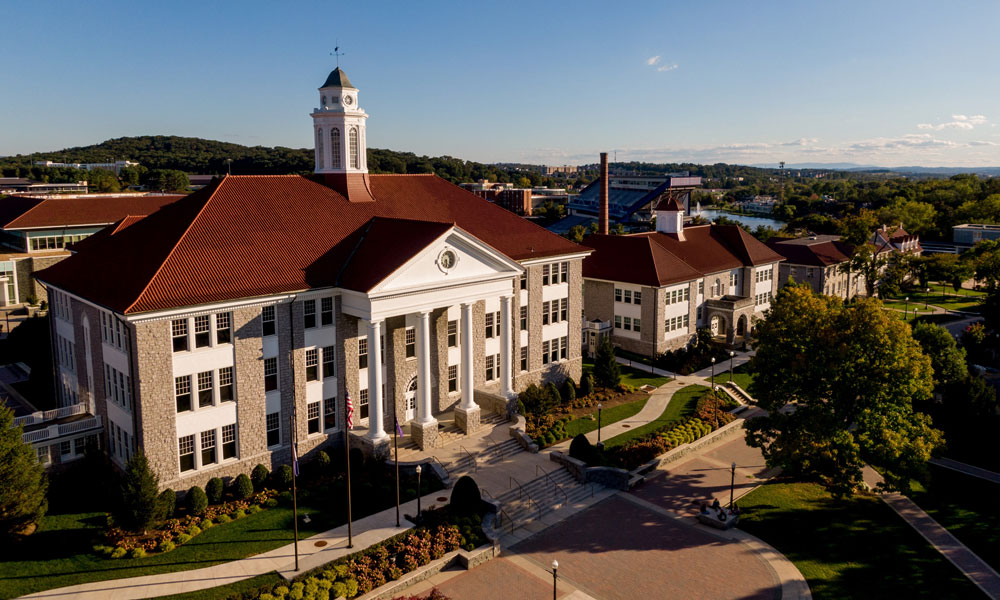Athletic Training Students Volunteer at 10K Bridge Run
Office of the Provost
By: Lori News
A typical day for senior athletic training student, Alicia Doran, usually consists of visits from JMU’s Women’s Tennis, Cross Country and Track teams and provided them with any sport-specific medical assistance. However, this past weekend Alicia and four other athletic training students had the opportunity to volunteer at the first ever Chesapeake Bay Bridge 10k run. With a total of 20,000 participants, the students were prepared for anything and everything that could go wrong during the event.
Dr. Jamie Frye, the Athletic Training Program Director and instructor, first heard about the event from colleague, and athletic trainer, Chris Troyanos. Troyanos is the head medical coordinator for the Dave McGillivray Sports Enterprises and has over 25 years of experience providing medical guidance to some of the largest races in the country including the Boston Marathon.
For an event of this size, the medical team must do extensive preparation and planning before race day. Though the run is only 6.2 miles, the students were ready for the possibility of serious issues.
Troyanos sent the students a 40-page medical operation manual full of emergency plans, maps of the area and various other medical information packets.
“It was a hefty amount of reading about the different types of illnesses that you would expect to see like dehydration and environmental type illnesses. The information also contained forms that volunteers would need to be familiar with such as consent forms and referral-of-care forms,” Frye explained. “The students learned about the paperwork side of things before they got there.”
Troyanos also conducted a web-based conference call with the students to familiarize them with the race route and where the medical teams would be stationed.
After a 5:45 a.m. arrival, the students were divided up and placed in either medical tents or on road assignments between the end of the bridge and the finish line. Because the bridge suspends more than 180 feet in the air, there were concerns about the wind and low guardrails. Medical personnel were stationed at each end of the bridge, while public safety and Coast Guards were positioned on and below the bridge.
In addition to being an Athletic Training student, Doran has completed her American Red Cross CPR training for the Professional Rescuer Certification. This certification allows her to provide assistance with first aid, respiratory distress and cardiac arrest. As an Athletic Training student, Doran has to be directly supervised by a licensed health professional, but she has the skills to aid a cramping runner in stretches and to assess other injuries.
“We watched the runners go by and looked for signs and symptoms of distress. If they needed assistance we would run over to them or we would call for more help,” Doran explained.
According to Frye, because this is the first year that the run was held, it appeared to have participants of varying fitness levels. Half the runners seemed to keep a steady run throughout the race, while the second half slowed down to a walk. A more recreational- level run combined with perfect weather conditions resulted in an easy day for the medical team.
“You plan for all these bad things to happen, but then they don’t. In the end, that’s the goal of an athletic trainer’s job. This particular race meets that goal because we were totally ready for anything to happen but thankful that nothing serious did,” Frye said.
Though the race consisted of only minor injuries, Doran said, “It was a good experience because I’ve never been to a big event like this, so it was really interesting to see other people in action. Athletic trainers relate well with other health care professionals like nurses and EMTs, so it was really eye-opening to see that bridge between us and how we could work together to help someone.”
The athletic training curriculum requires students to take the course Acute Care of Injuries and Illnesses. The course involves creating emergency action plans for events to demonstrate their ability to plan ahead and prepare appropriate responses to medical emergencies. This particular race provided a unique perspective as it falls into the category of mass event coverage. Planning for 20,000 participants that will cover 6.2 miles provides different challenges than other sporting events with fewer participants that remain on the same playing field.
Looking forward, five athletic training students will be chosen to help provide care to the race participants in the Boston Marathon taking place this April. This 35,000-person race will consist of more elite and competitive runners allowing them to put their services and knowledge to the test.
“I think it’s important for them to see other places to use their skills instead of the traditional high school and college sports settings,” Frye explained. “It’s really good to see how they can use their skills to give back to their communities by volunteering and it also helps people understand who athletic trainers are.”
